Honeynut Sambar
Sambar features bold flavors grounded in a broth of toor dal - the challenge is balancing tangy, sweet, and sour. When the crackling tadka hits the honeynut lentil base, it awakens the senses.
It’s been a particularly magical autumn here on Dean Street. Claire’s vision development coincided with the dazzling display of glowing leaves in New York. As the air crisps, she’s loving a well-bundled stroll followed by a warm bubble bath. Last night, we lit her first fire of the season. It's a bit early, but we’re feeling overly enthusiastic.



Finding the time to write about anything I’ve been cooking has been impossible. Juggling working with breastfeeding has been just as chaotic as I anticipated. Most days, I’m just trying to catch my breath figuratively and literally as I run between my workspace and apartment every two hours. Regardless, I’m committed to finding a rhythm to it all.
I just plopped Claire in her bouncer and turned on Raffi’s 1976 Singable Songs, so I have roughly 28 minutes to ramble about the most recurring dish on my menu this fall.
In 2018, Andi and I took an absurdly romantic trip to India. I won’t bore you with the details, but the hotel we stayed at north of Jaipur felt like being on a Wes Anderson film set. For breakfast, they served sambar, a South Indian lentil-based vegetable stew with fresh dosas and chutneys. I love a savory breakfast, and I helped myself to so many bowls that it satisfied my appetite for the rest of the day. The chef agreed to teach me how to make it, and after learning that the base is made with pumpkin, I knew it would become an autumn staple for us at home.
Sambar features bold flavors grounded in a broth of toor dal (split yellow lentils). The challenge is balancing tangy, sweet, and sour. I chose honeynut because it’s the sweetest squash, and its locality is sensible to all the other ingredients involved in the recipe. This is an excellent opportunity to use those last juicy but not-so-flavorful end-of-season tomatoes. The acidity of the tomatoes alleviates the density of the honeynut, and the sweetness of the honeynut lends to what those fall tomatoes lack.
The spicy, crunchy tadka (spiced ghee) requires authentic ingredients like hing and curry leaves, which are unfortunately tricky to find at most American grocery stores. You can find all the ingredients needed at Kalutsyans in Manhattan, but if you live outside NYC, try Patel Brothers or your local Indian grocer. If Andi and I ever leave New York City, I’ll start growing a curry leaf plant.
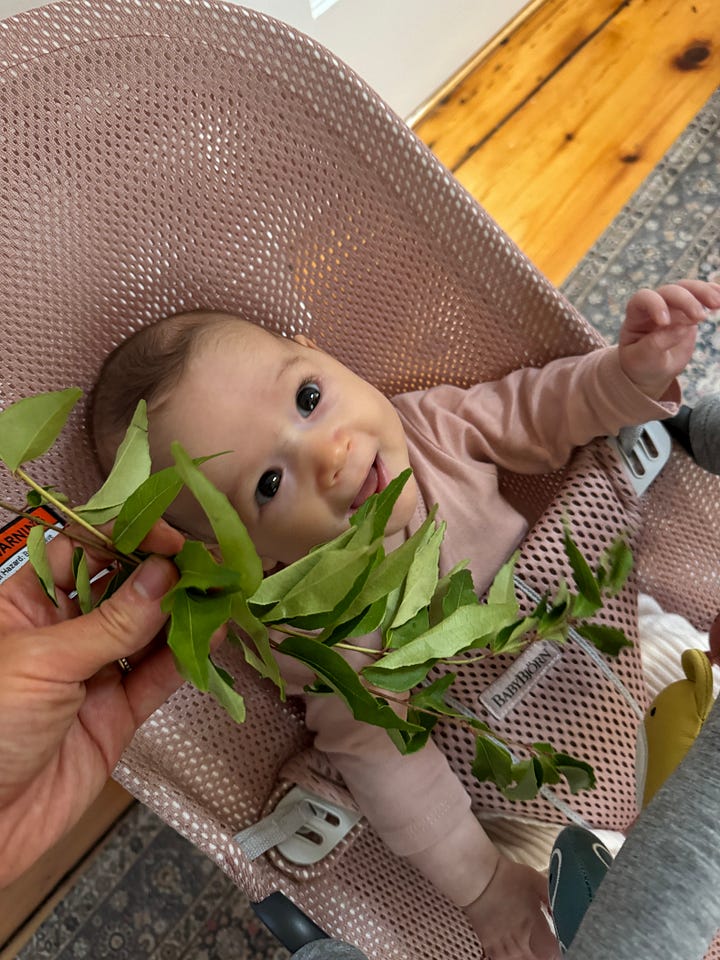
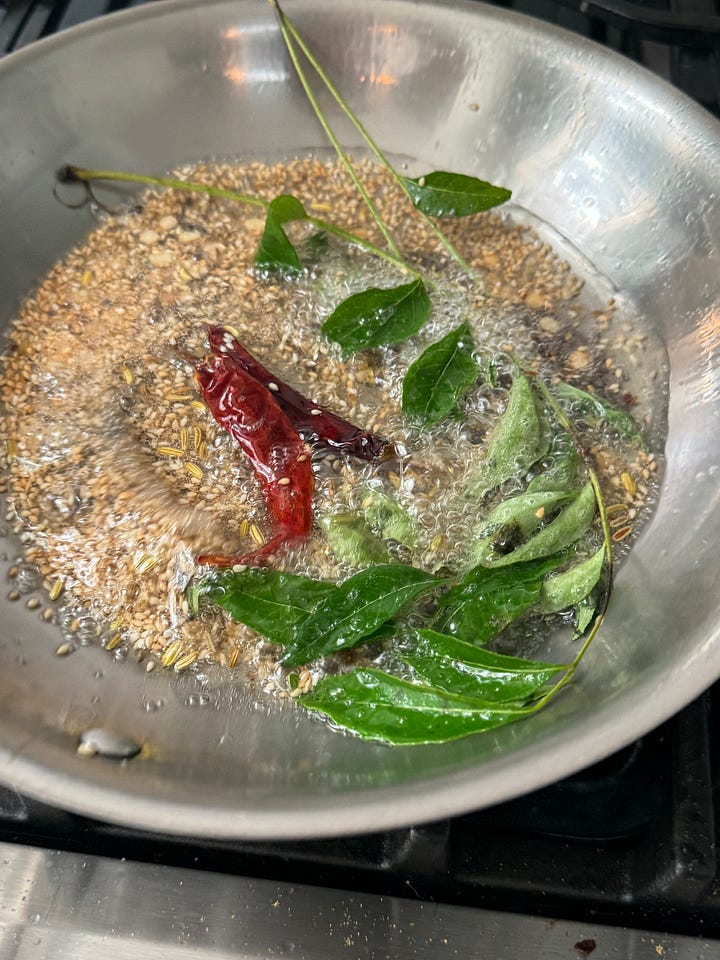
My take on this recipe features more squash and lentils for viscosity to enjoy as a main dish rather than a side. I deliver to my clients to warm for breakfast and garnish with a dollop of yogurt or green chutney, pickled chilies, fried curry leaves, and/or flowering cilantro. Sometimes, I’ll also deliver dosas so they can bake them into an egg crepe and tear the crisp edges to dip in the sambar. This dish is incredibly versatile and can be enjoyed at any time of day. It can even be vegan by substituting coconut oil for ghee. For Halloween this year and last, I delivered hollowed-out roasted koginut squash for my clients to fill with honey-nut sambar and ghost-shaped naan for dipping.


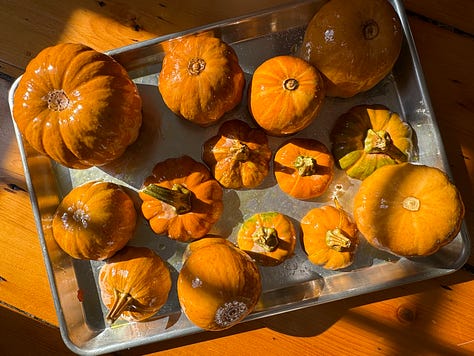
Honeynut sambar delivers in flavor and substance, whereas other squash soups can often fall flat. Conveniently, the flavors meld together even better with time. When the crackling tadka hits the honeynut lentil base, it awakens the senses. The recipe is incredibly forgiving and can be adjusted to your flavor preferences.
Ingredients
Serves 4
Honeynut Sambar
1 cup toor dal (dried split yellow pigeon peas), rinsed until the water runs clean, and drained
5 tablespoons coconut oil
4-5 honeynut squash, peeled, seeds scooped out, and cut into cubes
1 large tomato, diced
1 teaspoon ground turmeric
3-4 cloves garlic, finely minced
1-inch knob fresh ginger, finely minced
1-2 green chilis, deseeded and minced
Sambar masala, to taste
Tamarind pulp, crack and soak 2-3 pods in hot water 20 minutes before cooking to extract the flesh
1/4 cup unsweetened desiccated coconut: fresh is best, but dry works fine
Coconut sugar (optional)
Cilantro leaves and stems, finely chopped
Tadka
4 tablespoons ghee
2 dried red kashmiri chlies (Indian wrinkled red chili)
2 sprigs curry leaves
1 tablespoon sesame seeds
1 teaspoon cumin seeds
1 teaspoon black mustard seeds
1/2 teaspoon fennel seeds
1/2 teaspoon fenugreek seeds
1/2 teaspoon hing
Method
First, cook the lentils. Cover the toor dal with 8 cups of water in a medium pot and boil, skimming off the foam. Adjust the heat to medium-low, partially cover, and simmer away, stirring occasionally and adding more water as needed. This will take around 45 minutes to an hour. The goal is to yield a fully cooked, brothy lentil base.
While the toor dal cooks, heat coconut oil over high heat. Once hot, add the honeynut and tomato to fry in the oil. Toss constantly until the squash develops a sticky fur of sugars—season with turmeric, garlic, ginger, and green chilis before swiftly deglazing with a cup of water. Allowing the flavors to cling to the honeynut and toast first will maximize the broth's flavor.
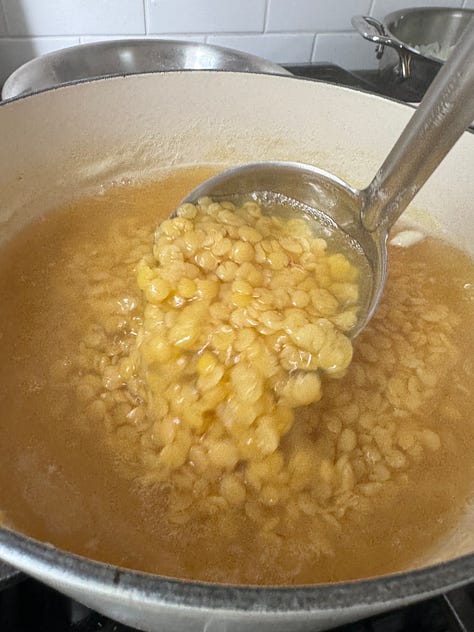


Now, add the brothy lentils to the seasoned honeynut base and bring to a boil, and then down to a simmer, uncovered. Add sambar masala, the warming agent, to taste, followed by tamarind pulp to introduce a sour flavor. Finally, finish the base with coconut and coconut sugar to lift all the spices and stir in cilantro for freshness. While the stew simmers for about 10 minutes to meld the flavors, gather your tadka spices.
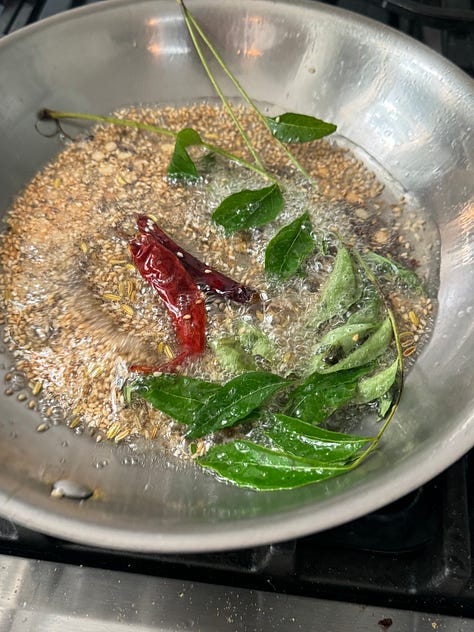
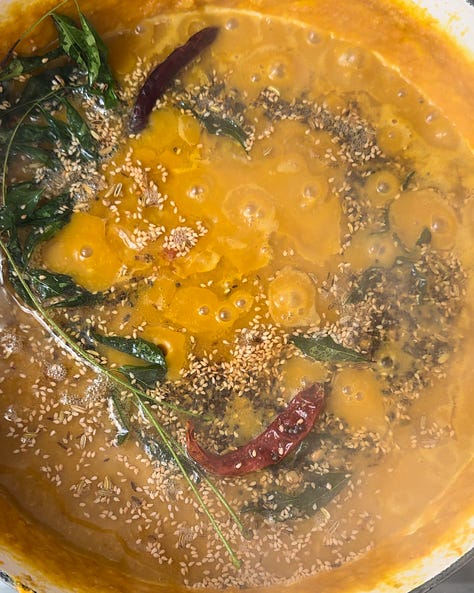
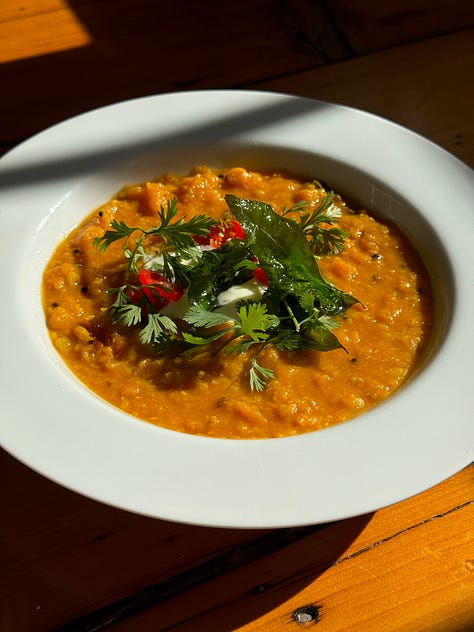
Melt ghee in a small sauté pan, and once shimmering, add spices with caution—the curry leaves will crackle, and the mustard seeds will pop furiously! After a few seconds, pour your tadka into the honeynut base, and it will bubble—this is the moment!
Ladle stew into bowls and garnish with green chutney or a dollop of yogurt, fresh cilantro, fried curry leaves, and possibly some pickled red chilies.
The stew will keep and develop flavor for up to a week and up to 6 months in the freezer.





